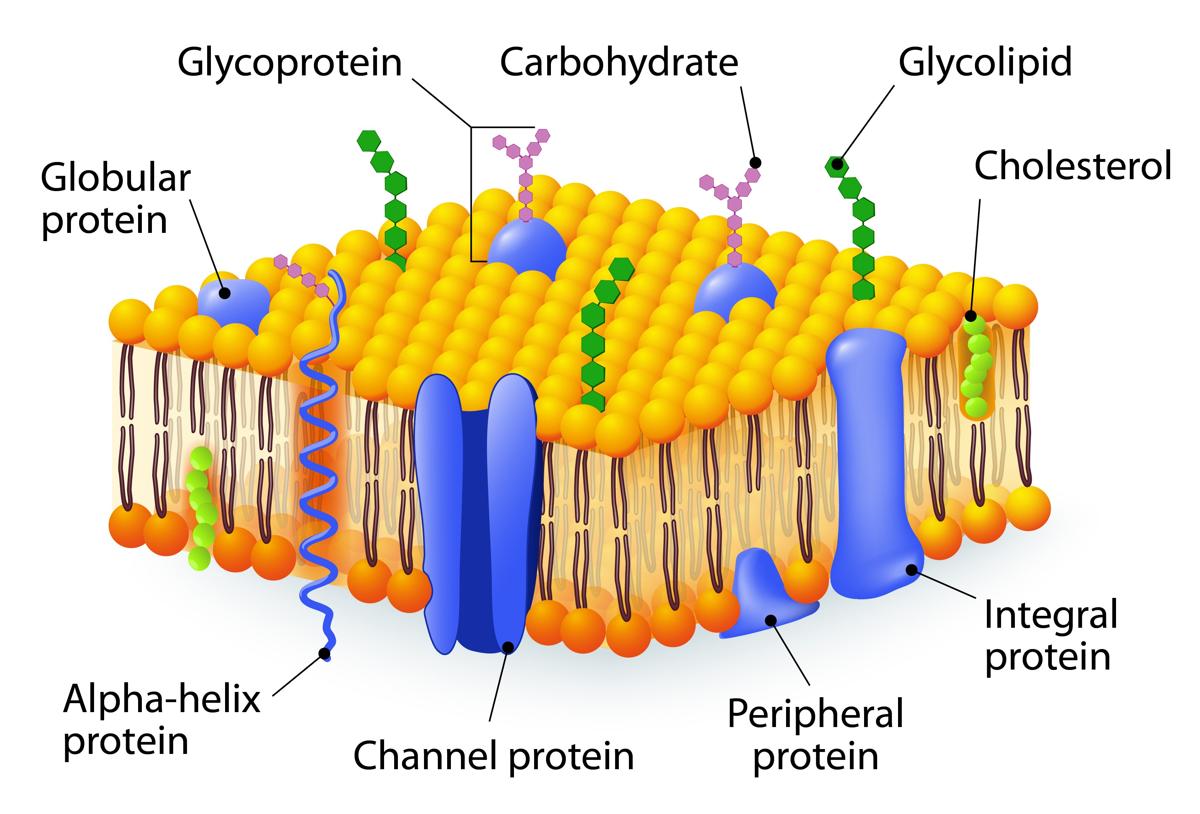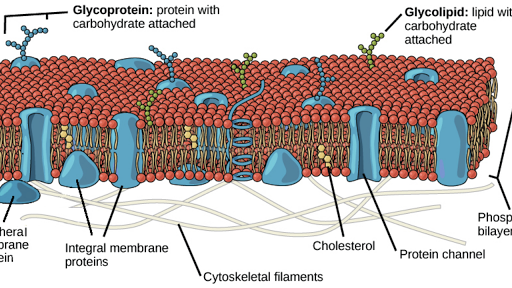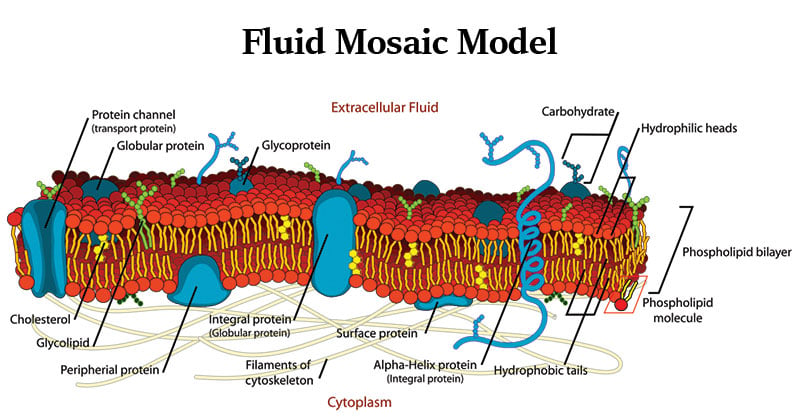Describe the Structure of Plasma Membrane Using Fluid Mosaic Model
For example myelin contains 18 protein and 76 lipid. The fluid mosaic model given by Singer and Nicolson explained the structure of plamsa membrane View the full answer Transcribed image text.

Fluid Mosaic Model Biology Wise
Select the correct experimental observation that supports the fluid mosaic model of membrane structure.

. Plasma membranes range from 5 to 10 nm in thickness. See answer 1 Best Answer. Describe the fluid mosaic model of cell membrane.
Cell membrane overview and fluid mosaic model. Plasma membranes range from 5 to 10 nm in thickness. The lipids and most of the protein in the plasma membrane are free to bob about sliding from one location in the membrane to another.
The fluid mosaic model describes the structure of a cell membrane. This model explains the structure of the plasma membrane of animal cells as a mosaic of components such as phospholipids proteins cholesterol and carbohydrates. Cell membrane overview and fluid mosaic model.
A fluid mosaic model is presented for the gross organization and structure of the proteins and lipids of biological membranes. Each phospholipid has a hydrophilic head pointing. Objective 13 In 1972 Singer and Nicolson proposed the proposed the Fluid Mosaic ModelFluid Mosaic Model of of membrane structure.
Discuss briefly fluid mosaic model for membrane structure. According to this model the plasma membrane is similar to a fluid in which various molecules are arranged in a mosaic-like pattern. The plasma membrane is made up of carbohydrates cholesterol proteins and a lipid bilayer or double layer of lipids.
For comparison human red blood cells visible via light microscopy are. Because lipids and proteins move about laterally within the membrane the membrane is a fluid mosaic of lipids. In this model the proteins that are integral to the membrane are a heterogeneous set of globular molecules each arranged in an amphipathic.
The fluid mosaic model describes the structure of the plasma membrane as a mosaic of componentsincluding phospholipids cholesterol proteins and carbohydratesthat gives the membrane a fluid character. The fluid mosaic model describes the structure of the plasma membrane as a mosaic of components including phospholipids cholesterol proteins and carbohydratesthat gives the membrane a fluid character. For comparison human red blood cells visible via light microscopy are.
The quasifluid nature of lipid enables lateral movement of proteins within the overall bilayer. A cell membrane is composed of lipids arranged with their hydrophobic tails touching each. These components give a fluid character to the membranes.
The model has evolved but it still accurately summarizes the structure and functions of the plasma membrane. Singer and Garth L. The fluid mosaic model of membrane structure is a cell membrane that behaves like a two- dimensional liquid of mixed composition.
The fluid mosaic model describes the structure of the plasma membrane as a mosaic of components including phospholipids cholesterol proteins and carbohydratesthat gives the membrane a fluid character. Science APCollege Biology Cell structure and function Membrane permeability. The plasma membrane that surrounds these cells has two layers a bilayer of phospholipids fats with phosphorous attached which at body temperature are like vegetable oil fluid.
The fluid mosaic model describes the structure of the plasma membrane as a mosaic of components including phospholipids cholesterol proteins and carbohydratesthat gives the membrane a fluid character. This ability to move within the membrane is called fluidity and is important for cell growth. According to their model cell 3 membranes are composed of a lipid bilayer with globular proteins embedded in the bilayer.
The founders are SJ. It indicates that the cell membrane is not solid. The plasma membrane possesses hydrophilic tails.
Plasma membranes range from 5 to 10 nm in thickness. For comparison human red blood cells visible via light microscopy are. The fundamental structure of the membrane is the phospholipid bilayer which forms a stable barrier between two aqueous compartments.
The cell membrane is described to be fluid because of its hydrophobic components that are integrated into the membrane structure such as lipids and membrane proteins that move sideways throughout the membrane. Proteins embedded within the phospholipid bilayer. In the case of the plasma membrane these compartments are the inside and the outside of the cell.
And the structure of the plasma membrane supports the old saying Oil and water dont. This is the currently selected item. The fluid mosaic model is a model of the cell membrane that explains how the components are able to move freely laterally in the bilayer and that the membrane is able to flex and bend with the cell.
The fluid mosaic model of plasma membrane is the most accepted hypothesis which describes the membranous components and their functions. The mosaic model of membrane structure describes the structure of the plasma membrane as a mosaic of components including phospholipids proteins carbohydrates cholesterol and proteins that gives the membrane a fluid character. Like all other cellular membranes the plasma membrane consists of both lipids and proteins.
The membrane is neither rigid nor static in structure. The model is consistent with the restrictions imposed by thermodynamics. Describe the Fluid Mosaic Model of membrane 2 structure.
Plasma membranes range from 5 to 10 nm in thickness. Singer and Garth L. The fluid mosaic model states that proteins float in a sea of lipids.
It is flexible and has a similar consistency to vegetable oil so all the individual molecules are just floating in a fluid medium and they are all capable of moving sideways within the cell membrane. The Fluid-Mosaic-Model describes the structure of the plasma membrane as a mosaic of components that gives the membrane a fluid character. The fluid-mosaic model describes the plasma membrane of animal cells.
The protoplasm of every living cell is enclosed by a plasma membrane. Phospholipids form single lipid layer in the center of the membrane. What does the fluid mosaic model describe about the structure of plasma membranes.
Fluid Mosaic Model. The fluid mosaic model was proposed by SJ. The plasma membrane is a fluid mosaic model meaning _____.
The plasma membrane may be known as a fluid mosaic model where the membrane is a fluid structure with various proteins embedded in or attached to the bilayer of phospholipids.

Fluid Mosaic Model Diagram The Fluid Mosaic Model Of The Cell Plasma Membrane For Cell Membrane Coloring Worksheet Plasma Membrane Cell Membrane Structure

Fluid Mosaic Model Cell Biology

Fluid Mosaic Model Cell Membranes Article Article Khan Academy
Comments
Post a Comment